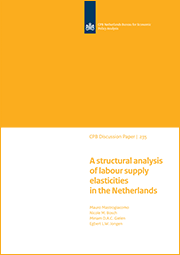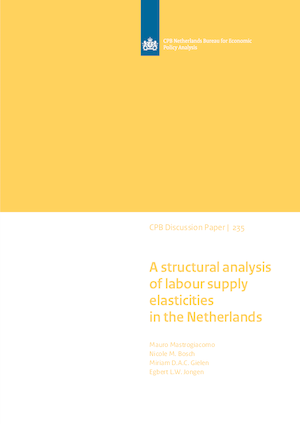A structural analysis of labour supply elasticities in the Netherlands

Read also the accompanying attachment below, with supplementary material.
For couples we find that men have much smaller elasticities than women, in particular when children are present. Furthermore, cross elasticities of men's wages on women's labour supply in couples are non-negligible. When they are single, men and women have similar labour supply elasticities. The elasticity is relatively high for single parents with small children, but much lower for single parents with children in secondary school. Low skilled singles and single parents have much higher labour supply elasticities than their high skilled counterparts. Differences by skill are less pronounced for couples. For all groups, the decision whether to participate or not is much more responsive to nancial incentives than the hours per week decision.
